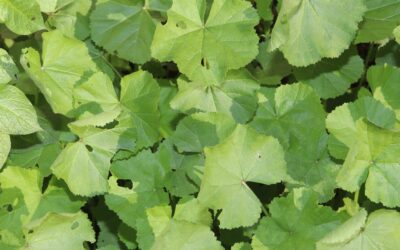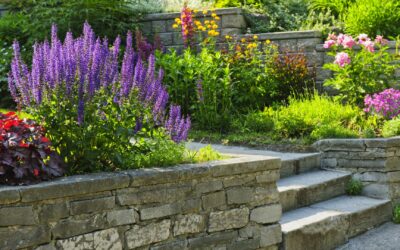Mallow weed is a common problem for commercial facility and property managers, quickly taking over landscapes if not properly controlled. These pesky weeds can be identified by their round, fuzzy leaves and small pink or white flowers. In this ultimate guide, we'll...
Recent Posts
The Landscaper’s Guide To Plant Growth Regulators
Landscapers often struggle with controlling plant sizes and health. Plant Growth Regulators (PGRs) are organic compounds that modify plant growth. This article will guide you in using PGRs to solve common landscaping challenges. Read on for a landscaper's guide to...
How Lawn Pest Control Enhances Overall Landscape Health
According to recent research by the University of Princeton, lawns account for over 40 million acres of American land today. Maintaining a lush, green space is more than just a matter of aesthetics; it's about creating a healthy, sustainable outdoor environment. One...
Spring has sprung, which means your plants are making their way towards full bloom. We are entering peak season for flowers and other plant life, so it is important they are cared for properly. Now is usually the time landscapers perform a final rejuvenation pruning.
What Is Rejuvenation Pruning?
Rejuvenation pruning involves removing old limbs, which allows plants to grow new branches. Some plants require gradual pruning. Other plants require hard pruning. In hard pruning, you cut the shrub down to about 6 to 12 inches. In gradual rejuvenation, you would remove old branches over three years. If your landscape includes perennials, rejuvenation pruning is crucial.
What Are Perennials?
Perennials are plants that can grow for many seasons. In the winter, the top of the plant dies, but it will begin to regenerate at the beginning of spring. The root system of perennials remains the same season after season.
Some examples of perennials include:
- Peonies
- Daylilies
- Black-eyed Susans
- Shasta daisies
Another common landscape feature that is considered a perennial is ornamental grass. Ornamental grass is any grass-like plant that grows with perennials. Often, they die in the winter, then regenerate like other perennials.
How Is Rejuvenation Pruning Accomplished?
Rejuvenation pruning is done by cutting perennials back before there is any new growth. For some plants, this may involve cutting the plant nearly to the ground. For ornamental grass, you want it to be cut back at the end of winter. Grass should never be cut so short that the roots become susceptible to disease or the weather.
Larger grass should remain at 18 inches or above, and smaller grass should remain above four to six inches.
A good landscape is part of a business’s appeal. For landscape pruning and maintenance, contact Sunrise Landscape today.
Contact Us
"*" indicates required fields
Recent Posts
Mallow Weed Control: The Ultimate Guide
Mallow weed is a common problem for commercial facility and property managers, quickly taking over landscapes if not properly controlled. These pesky weeds can be identified by their round, fuzzy leaves and small pink or white flowers. In this ultimate guide, we'll...
The Landscaper’s Guide To Plant Growth Regulators
Landscapers often struggle with controlling plant sizes and health. Plant Growth Regulators (PGRs) are organic compounds that modify plant growth. This article will guide you in using PGRs to solve common landscaping challenges. Read on for a landscaper's guide to...



